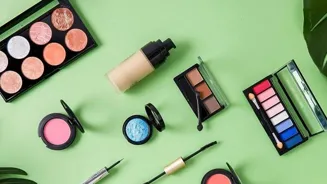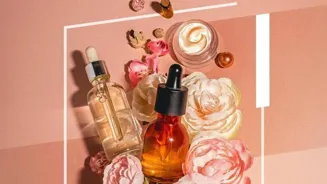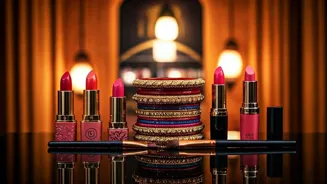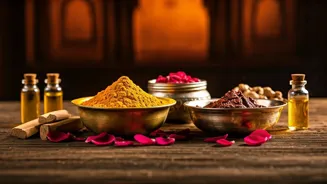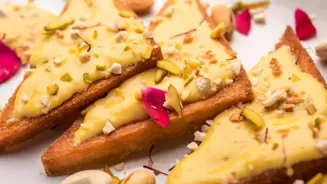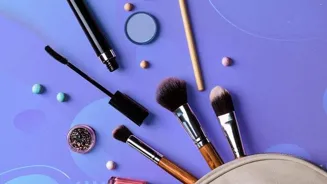Explore the captivating journey of beauty trends from ancient civilizations to modern times, unveiling the evolution of cosmetics
From kohl-lined eyes in ancient Egypt to the perfectly contoured faces of
today, the story of cosmetics is a long and winding one, reflecting not just changing ideals of beauty but also societal values, technological advancements, and the very essence of self-expression.
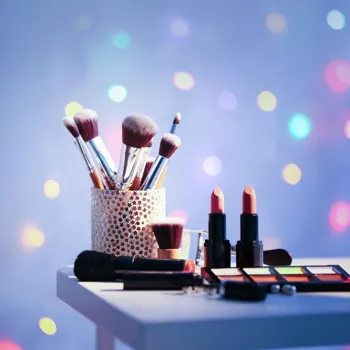
It's a journey that takes us through empires and eras, showcasing how different cultures have used paints, powders, and perfumes to enhance their appearance and project a desired image.
Let's take a nostalgic trip through time and explore some of the most fascinating beauty trends that have shaped the cosmetics industry into what it is today.
Ancient cosmetic practices: art, culture, and magic intertwined
The fascination with altering one's appearance is as old as civilization itself. Archaeological findings reveal that early humans used natural pigments from berries, clay, and minerals to decorate their bodies for rituals, ceremonies, and even warfare.
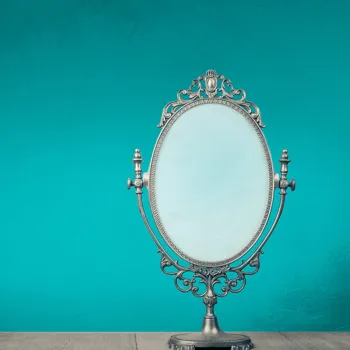
As societies evolved, so did the sophistication of cosmetic practices. In ancient Egypt, both men and women embraced elaborate makeup routines. Kohl, made from galena, was used to line the eyes, not only for aesthetic purposes but also for protection against the sun and flies.
Red ochre was applied to the lips and cheeks, while henna was used to dye hair and nails. The Egyptians believed that makeup held magical properties, and its use was deeply intertwined with their religious beliefs and concepts of afterlife beauty.
Much of these ancient practices was a blend of art, practicality, and deep cultural significance.
Ancient Greeks valued natural beauty; Romans had extravagant cosmetics
Across the Mediterranean, the ancient Greeks and Romans also placed great emphasis on beauty, although their approaches differed somewhat from the Egyptians. The Greeks admired natural beauty and favored a more subtle use of cosmetics.
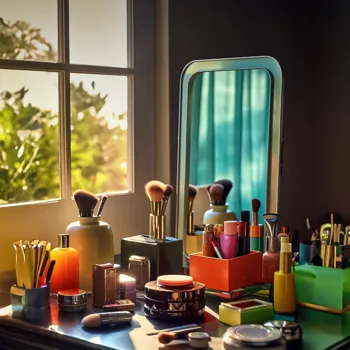
Pale skin was highly prized, achieved through the use of white lead or chalk. Rouge, derived from berries or beetroot, was used sparingly to add a touch of color to the cheeks and lips. Perfumes, made from fragrant oils and herbs, were also popular.
The Romans, on the other hand, were known for their extravagant use of cosmetics. They used a variety of products to lighten the skin, darken the eyelashes, and color the lips.
Bathing rituals were an integral part of Roman beauty culture, with elaborate bathhouses offering various treatments and services. Historical record shows that both civilisations also used cosmetics to denote social ranking of its inhabitants.
During Middle Ages, cosmetics viewed suspiciously by the Church; Renaissance saw revival of beauty trends
During the Middle Ages in Europe, the use of cosmetics was often viewed with suspicion, particularly by the Church. However, makeup did not entirely disappear.
Pale skin continued to be fashionable, and women used various methods to achieve a fair complexion, including bloodletting and the application of lead-based powders.
Herbal remedies and natural ingredients were used to create simple cosmetics, such as lip stains made from berries and cheek tints made from flower petals. Elaborate hairstyles and headdresses were also a key feature of medieval beauty.
The Renaissance, saw a revival of interest in classical art and culture, and with it came a renewed appreciation for beauty and cosmetics. Women embraced richer colors and more elaborate makeup looks.
Venetian ceruse, a white face powder made from lead, became extremely popular, despite its known toxicity. Rouge and lipstick were also used to add color to the face. Hair was styled in elaborate updos, often adorned with jewels and ribbons.
18th-century Europe: cosmetics, wigs, trends; 19th-century shift to natural beauty
The 18th century in Europe was an era of extreme extravagance and artifice, and cosmetics played a major role in creating the desired image. Pale skin, rouged cheeks, and painted lips were hallmarks of the era. Men and women alike used white face powder to achieve a porcelain-like complexion.
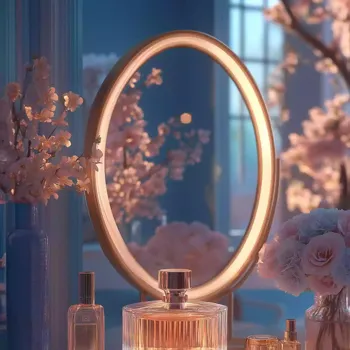
Wigs were an essential part of both men's and women's fashion, often towering high and elaborately styled. Patches, small pieces of fabric, were applied to the face to accentuate beauty marks or to conceal blemishes.
The French court at Versailles set the standard for beauty trends, with Queen Marie Antoinette being a trendsetter of her time. The 19th century saw a shift towards a more "natural" look, influenced by Victorian ideals of modesty and virtue.
Heavy makeup was frowned upon, and women sought to enhance their beauty in more subtle ways. Rosy cheeks were achieved through exercise or by pinching the cheeks, while clear skin was maintained through careful skincare routines. Homemade cosmetics made from natural ingredients were popular.
Cosmetics industry revolutionized by 20th-century tech and Hollywood influence
The 20th century brought about a revolution in the cosmetics industry, driven by technological advancements, mass production, and the rise of Hollywood. The invention of the tube of lipstick in the early 1900s made it easier and more convenient to apply, leading to its widespread adoption.
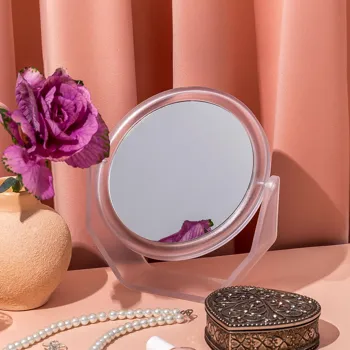
New ingredients and formulations were developed, resulting in a wider range of cosmetic products. Hollywood actresses became beauty icons, inspiring women around the world to emulate their looks.
The flapper era of the 1920s saw the rise of bold makeup trends, such as dark eyes, rouged knees, and cupid's bow lips. The 1950s brought about a return to more classic and feminine beauty ideals, with emphasis on red lipstick, winged eyeliner, and perfectly coiffed hair.
Cosmetics industry evolves with trends towards inclusivity and self-expression
The late 20th and early 21st centuries have witnessed an explosion of innovation and diversity in the cosmetics industry. From the glamorous disco era to the grunge of the 90s, people started experimenting with vibrant tones and unconventional styles.
The rise of internet has made it easier for beauty trends to spread globally and that allowed the emergence of indie beauty brands and personalized skincare solutions. The focus shifted towards inclusivity and representation, with brands catering to a wider range of skin tones and ethnicities.
Today, the cosmetics industry is a multi-billion dollar global enterprise, driven by a desire for self-expression, empowerment, and the pursuit of beauty in all its diverse forms.
Whether it's through a swipe of lipstick or a carefully crafted skincare routine, cosmetics continue to play a significant role in how we present ourselves to the world.
While many trends have come and gone, one thing remains constant, the fascination with enhancing our natural beauty continues to endure.
AI Generated Content. Glance/InMobi shall have no liability for the content